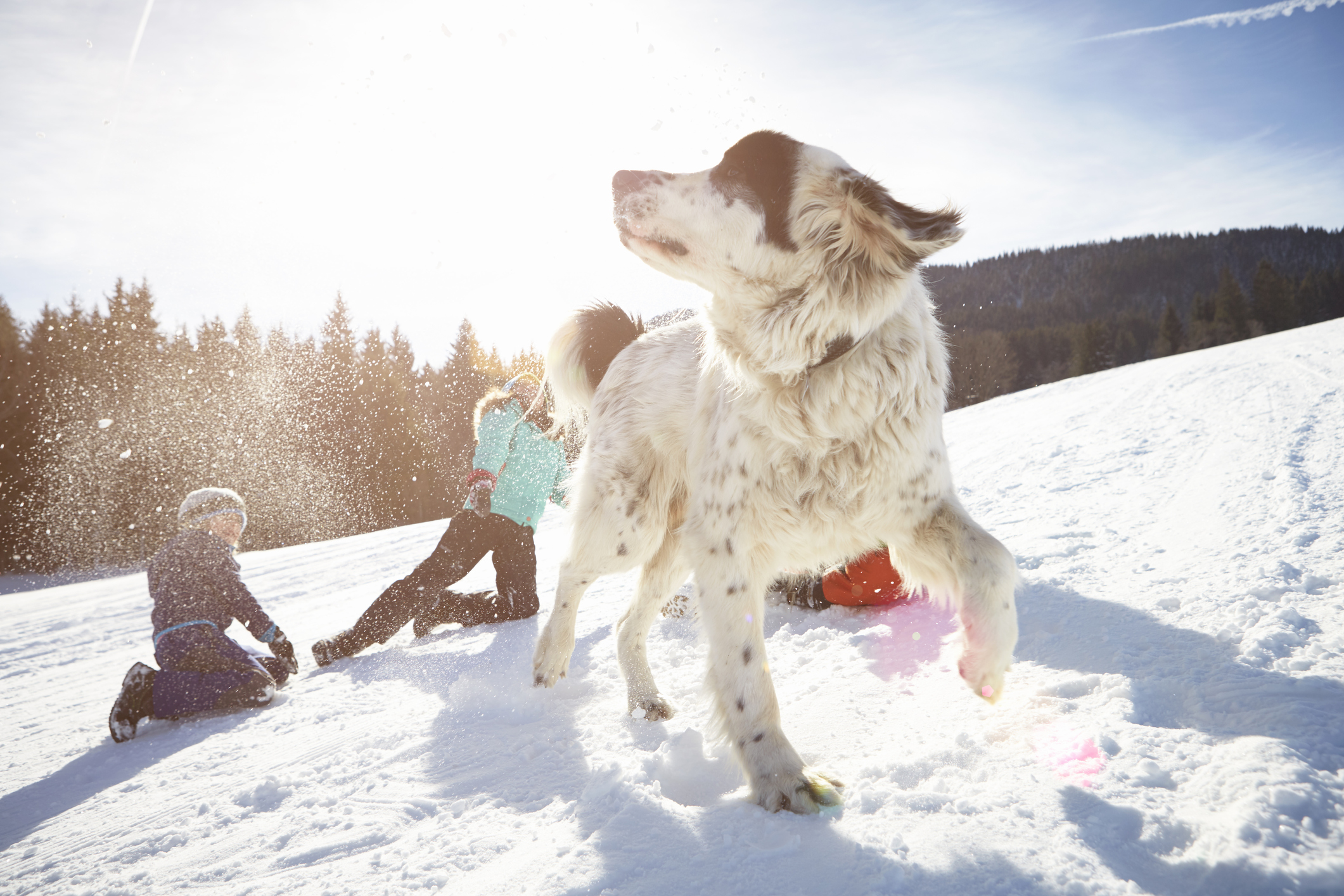
Nov 01, 2025 | By, For Pet's Sake
Beat the winter woes: 9 tips to keep your pet warm, dry, and safe
When winter rolls in with its chilly winds, icy rain, and snow-covered sidewalks, it’s not just humans who feel the freeze—our pets do too. Whether your furry friend is a snow-loving pup or a cozy couch cat, cold weather can pose serious risks. But with a few smart moves, you can keep your pet warm, dry, and happy all season long. Here are seven tips to help your pet brave the winter weather like a pro.
- Layer up: Just like you wouldn’t step outside without a coat, your pet may need extra layers too. Short-haired dogs, senior pets, and small breeds benefit from insulated jackets or sweaters. Look for waterproof options to guard against rain and snow.
- Protect those paws: Snow, ice, and salted sidewalks can wreak havoc on your pet’s paws. Invest in booties to shield their feet from the cold and chemicals. If your pet isn’t a fan of footwear, wipe their paws with a damp cloth after walks to remove salt and debris. A little paw balm can also help prevent cracking and dryness.
- Groom appropriately: As temperatures drop, keeping your pet’s fur at an appropriate length is essential for warmth and protection. Fur acts as a natural insulator, helping to regulate body temperature and shield against chilly winds. Avoid shaving or trimming too short during colder months, especially for breeds with thick coats.
- Limit outdoor time: Cold temperatures combined with wind chill can be dangerous. Keep walks short during extreme weather and opt for indoor playtime instead. If your pet loves the outdoors, monitor them closely and bring them in at the first sign of shivering or discomfort.
- Create a warm, indoor sanctuary: Make sure your pet has a cozy spot away from drafts. A heated pet bed or a pile of blankets in their favorite corner can make a big difference. If your home has tile or hardwood floors, consider adding rugs to keep paws warm.
- Dry off after rain or snow: Wet fur can chill your pet quickly. After outdoor adventures, towel them off thoroughly—especially their belly, legs, and paws. Keep a stash of dry towels by the door for easy cleanup. And don’t forget to check for snowballs clinging to fur!
- Adjust food and water as needed: Pets may burn more calories in winter to stay warm, especially if they’re active outdoors. Talk to your vet about adjusting their diet. Also, make sure their water bowl isn’t near a drafty window or heater, as extreme temperatures can affect hydration.
- Be mindful of car safety: Never leave your pet in a cold car. Temperatures can drop quickly, turning your vehicle into a freezer. If you’re traveling, pack blankets and keep your pet secure in a carrier or with a seatbelt harness.
- Schedule a winter wellness check: Cold weather can aggravate certain health conditions, especially in older pets or those with chronic issues like arthritis. A winter vet visit is a great way to make sure your pet is in tip-top shape before the season gets rough. Ask your vet about vaccines that may be relevant for winter, like protection against respiratory illnesses that spread more easily when pets spend time indoors.
Have a question about pet health? Want to become the best possible pet parent? Find helpful tips, reminders, and insights to give your furry friend the best possible care with For Pet’s Sake!

